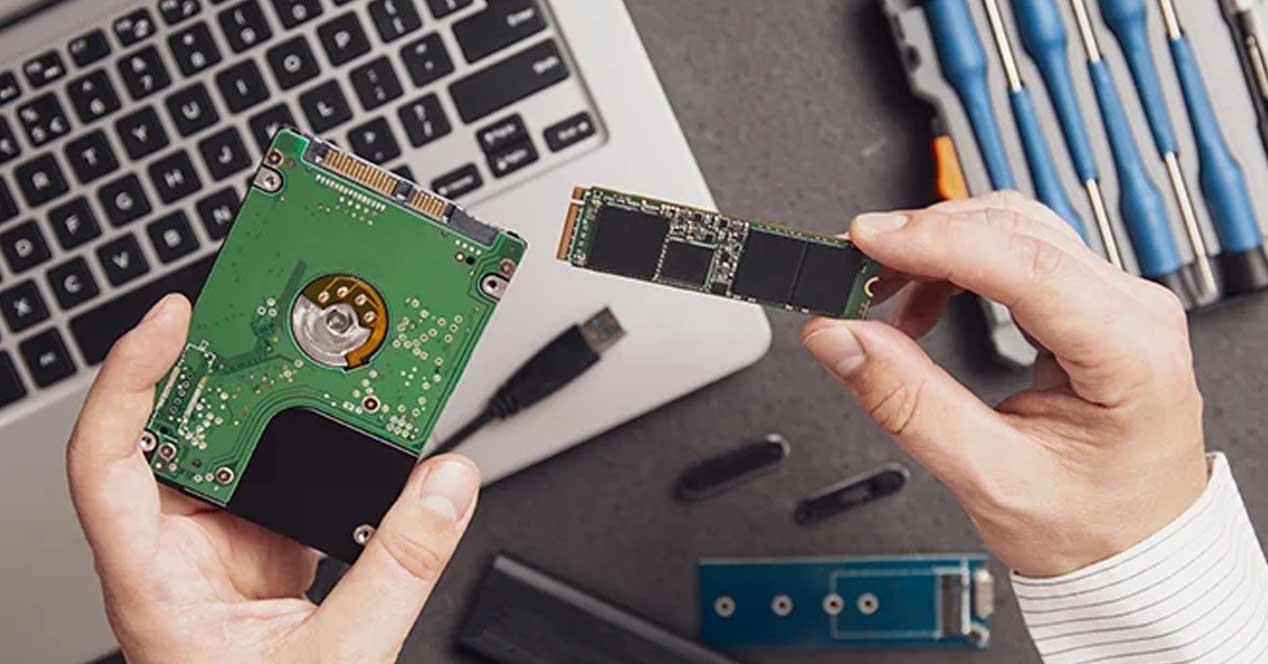Today, many people use an SSD (in 2.5″ or M.2 format) as their primary storage device, for the operating system, and a traditional hard drive as a secondary drive to serve as additional storage. That’s fine, since for now mechanical hard drives still offer the best capacity/price ratio, but you have to be careful because there are a series of bad practices that could lead to disaster.
What you should NOT do if you have SSD and HDD at the same time
Especially when we talk about users who have a low capacity SSD, it is common that they decide to use it only for the operating system and install the programs and games they use the most, leaving the normal hard disk for the rest, including other programs or game installations. They are not used very often. This is a big mistake, because in this way we will “bind” the mechanical disk to the operating system, so that if the disk fails or we disconnect it, PC will stop booting
Note that we put quotes around this “link” between HDD and SSD, and we do that because obviously it’s not a link as such, but there are routes (“paths” ) in the operating system that lead to the hard disk and which, due to the way the operating system is programmed, means that if these do not work, the system cannot boot).
This, at the same time, forces Windows to constantly check if the data on the HDD is still there, and of course the HDD is much slower than the SSD (again, regardless of type, an HDD is always slower). slower than an SSD) and this causes an increase in information access latency which, in short, penalizes the performance of the equipment. This is especially noticeable during system startup, but it also slows down the overall PC performance.
Follow “best practices” and everything will work better
Best practice when you have both an SSD and HDD in your PC is to use the SSD for ALL installs, whether programs or games, leaving the HDD just for storage massive. In this way, even if the mechanical disk is damaged or even if you disconnect it from the PC, the operating system will be able to continue booting without problems, as if nothing had happened and, at the same time, you will avoid this performance drag. that we mentioned earlier.
This is one of the main reasons why you should think very carefully about the SSD capacity you need when you go to buy it, especially not to run out. When you go to buy a new SSD for the system, think that you will not only install the operating system, Office and the programs or games that you use the most, you must think that EVERYTHING will be installed on the SSD, leaving the hard disk drive simply to store your photos, documents, videos, etc. but not to install anything on it.
Now the question will come: what SSD capacity is it recommended to buy? It will depend on you, but normally in a PC used for office automation and navigation, with 256 GB you will have more than enough, while in a gaming PC in which you are going to install several games, you will have to think about buying 1 TB or even more .










